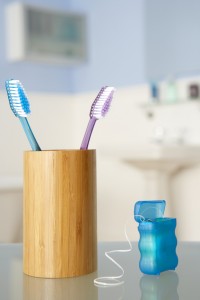 There have been flossing recommendations floating across the Internet for many years. How do you know which ones are on-point, and which are just bad ideas? Believe it or not, the topic of whether flossing should come before or after brushing has provided plenty of dissent in the dental community.
There have been flossing recommendations floating across the Internet for many years. How do you know which ones are on-point, and which are just bad ideas? Believe it or not, the topic of whether flossing should come before or after brushing has provided plenty of dissent in the dental community.
The more effective your oral hygiene, the less time you have to spend over the sink. Since many patients don’t love brushing and flossing, we find that it’s best to make sure yours is as efficient as possible. Read on for some flossing guidance, and get in touch if you have any dental health questions you’d like answered.
Why Floss At All?
You may have heard that flossing doesn’t make a significant impact on prevention of tooth decay. This overlooks a few studies (like one showing that dental professionals consistently flossing children’s teeth reduced cavities by 40%), which point to the flossing problem potentially being poor technique.
While flossing might not make a big impact on adult caries, it it a significant tool in the fight against gum disease. By preventing and reducing gum inflammation, flossing helps you avoid periodontal disease, which is the number one cause of tooth loss.
Flossing Before vs. Flossing After Brushing
- Case for before: Some dentists feel that flossing first helps patients avoid skipping it (since they’re more likely to pass on flossing than brushing). Others feel that flossing before using a fluoride toothpaste is a good idea, so that the fluoride has better access to the areas between your teeth (as they’re free of food particles).
- Case for after: Other dentists think that flossing after brushing is more effective because fluoride from the toothpaste is already present in the mouth, and the floss moves the fluoride into every nook and cranny.
The end conclusion? Find the timing that works best for you. If you find that flossing first helps you get it done, go for pre-brushing flossing. If you feel that flossing after gets your gums and teeth cleaner, choose that route. We’ll keep investigating the results of both methods, and let you know on this blog when something new comes up.
